Plants That Kept The Cowboys Alive On Their Way Westward
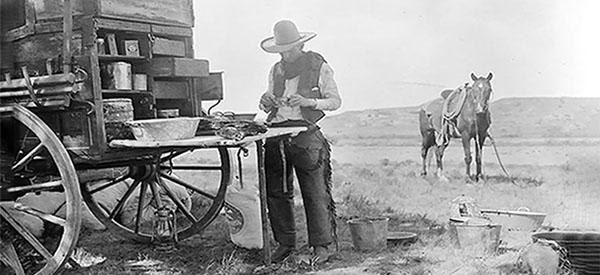
Food preservation in the days of the ol’ West wasn’t even close to what it is today. Commercially preserved food wasn’t widely available in the late 1800s when the cowboy culture was at its peak (though it did exist, surprisingly enough), and storage space was at a premium when they were on the trail, so the cowboys who rode West oftentimes made do with what was available to supplement their packable diet of dried beef and beans: wild game and edible plants.
Nomadic Diets
We all know that plant life varies from place to place. This means that, depending on where the herd took them, cowboys were forced to alter their diets to include whatever was growing locally. They didn’t stay in one place long enough to cultivate crops and produce doesn’t store well on long journeys, so they mostly relied on wild edibles to supplement their chuckwagon-diets of dried beef and beans.
Living off the plants that inhabited their current environs required a.jpg) specific sort of knowledge. Chuckwagon cooks and the cowboys themselves learned from Native Americans and from other cowboys. Along with other cowboy skills like roping, driving cattle, and tending the herd, cowboys passed on their knowledge of edible plants to the new recruits.
specific sort of knowledge. Chuckwagon cooks and the cowboys themselves learned from Native Americans and from other cowboys. Along with other cowboy skills like roping, driving cattle, and tending the herd, cowboys passed on their knowledge of edible plants to the new recruits.
The following types of plant life were consumed on the trail, but you’ve got to keep in mind that the varieties of plants consumed varied a great deal based on region. In the desert and semi-arid western areas, for example, juicy berries and leafy greens were few and far between, but sage and cacti abounded. Cowboys might consume a completely different lineup of plants as they made their way along their routes.
Berries
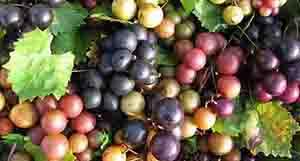
Muscadines
There are several types of wild berries that could be found across the West. Muscadines, a type of wild grape, were common cowboy fare, along with elderberries, mulberries, blueberries, blackberries, gooseberries, currants, and wild strawberries.
The availability of these wild berries was obviously very dependent on the season. Berries tend to stay on their bushes or vines for a very short period of time before they either rot or are snatched up by animals. Due to their limited availability, cowboys often brought along dried fruit. They commonly created puddings and cobblers of a sort using fruit and either biscuits of sourdough bread so that they weren’t always deprived of dessert when they were overland.
Nuts
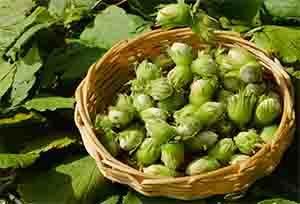
Hazelnuts
Being in the saddle all day could wear a cowboy out, and next to heavily caffeinated coffee, protein was one of the most effective ways for the cow herds to keep their energy up. This, along with the fact that they were easy to transport and prepare and were filling, led to dried beef and beans being famous for comprising the cowboy diet.
There’s more than one way to crack a nut, though, and cowboys found extra protein that didn’t make them quite as gassy in local nuts. They ate acorns (properly leached of tannins, of course), pecans, pine nuts, hazelnuts, and other types of tree nuts commonly found out west. These nuts were often roasted over an open fire and enjoyed as a tasty snack around the campfire at night, oftentimes passed around with a bottle of liquor, another cowboy staple.

Herbaceous Greens
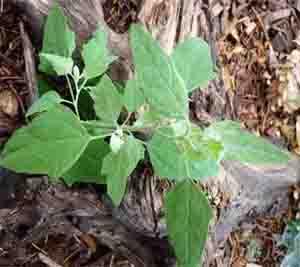
Lamb’s Quarters
While a salad of wild greens sounds like a delicious meal or side dish today, people didn’t place the same stock in the healthful nature of green vegetables in the late 19th century. Instead herbs and other tasty leafy greens were thought of more as seasoning. Local wild herbs like sage, wild garlic, and chicory.
Watercress is a commonly found and popular wild green, along with dandelion, both of which were sometimes consumed on cattle drives. Asparagus, lamb’s quarters, and chickweed were other additions to traditional cowboy ‘whistle berries’, or beans. While beans are filling, they’re not exactly the most flavorful or satisfying on their own, so these plants added flavor and variety to the Western cowboy’s diet.
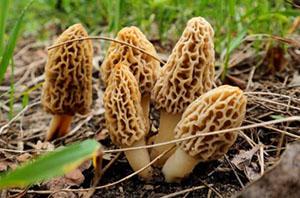
Morel Mushroom
Fungi
Though fungi weren’t as common in drier areas of the west, there were still plenty to forage. Mushrooms were commonly shunned as food source in those days due to the fact that many fungi are incredibly poisonous and look remarkably like their edible counterparts, but with a proper passing on of cowboy knowledge, many cow herds enjoyed the culinary masterpiece that is the morel mushroom or the meaty puff-ball mushroom, both commonly found in the west.
Related: Edible and Non-edible Mushrooms you Find in Forests
Cacti
In dessert and steppe areas along the trails of the old West, where fruit and other wild plants were few and far between, there were always cacti. Despite their spiky nature, many cacti varieties are edible, either in part or the whole plant, so long as they are prepared properly. Not only were they a viable food source, they were a refreshing, watery treat on long, hot days in the saddle.
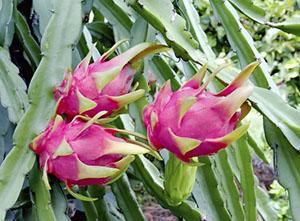
Pitaya
The prickly pear cactus, with its tasty fruit and leaves (often referred to as ‘pads’) that are perfectly edible once the spines are removed, was a favorite for cowboys in the Western states. Pitaya is also commonly consumed. Some cactus fruit can have a laxative effect, which could lead to dangerous dehydration, not to mention a really awful case of a sore hind end, so knowledge of which plants made good eating was also passed along from cowboy to cowboy.

Eventually, the development of a comprehensive railroad system out West led to an obsolete cowboy lifestyle. There was a more efficient way to drive large amounts of cattle across the country to feed a budding population from the packing plants in the western half of what is now the all the United States. Today, the cowboy way carries on in some Western states, with cowboys continuing to raise cattle on their ranches, herd them to market, and sell them to feed the booming beef industry, but much of the cowboy cuisine has gone by the wayside due to improvements in food storage and preservation techniques.
However, there are still pockets of true cowboys across the west, and though they may have access to modern foods on the trail, they’re bound to indulge in an old cowboy foraged favorite every once in a while.
This article was inspired by ”The Lost Frontier Handbook”. The Lost Frontier Handbook is a guide created by Suzanne Sherman. It reveals long-lost skills of our ancestors that helped them survive during a crisis, natural disasters, and emergencies. The handbook contains high-resolution, detailed diagrams and step-by-step instructions on various survival tips and techniques. Some of the valuable lessons that consumers will discover include medicinal remedies, stockpiling and preserving foods, finding a steady supply of clean water off the grid, and many more. In addition, the content involves step-by-step instructions and detailed images. You can get your copy HERE !
Anyone can join.
Anyone can contribute.
Anyone can become informed about their world.
"United We Stand" Click Here To Create Your Personal Citizen Journalist Account Today, Be Sure To Invite Your Friends.
Please Help Support BeforeitsNews by trying our Natural Health Products below!
Order by Phone at 888-809-8385 or online at https://mitocopper.com M - F 9am to 5pm EST
Order by Phone at 866-388-7003 or online at https://www.herbanomic.com M - F 9am to 5pm EST
Order by Phone at 866-388-7003 or online at https://www.herbanomics.com M - F 9am to 5pm EST
Humic & Fulvic Trace Minerals Complex - Nature's most important supplement! Vivid Dreams again!
HNEX HydroNano EXtracellular Water - Improve immune system health and reduce inflammation.
Ultimate Clinical Potency Curcumin - Natural pain relief, reduce inflammation and so much more.
MitoCopper - Bioavailable Copper destroys pathogens and gives you more energy. (See Blood Video)
Oxy Powder - Natural Colon Cleanser! Cleans out toxic buildup with oxygen!
Nascent Iodine - Promotes detoxification, mental focus and thyroid health.
Smart Meter Cover - Reduces Smart Meter radiation by 96%! (See Video).




.png)

